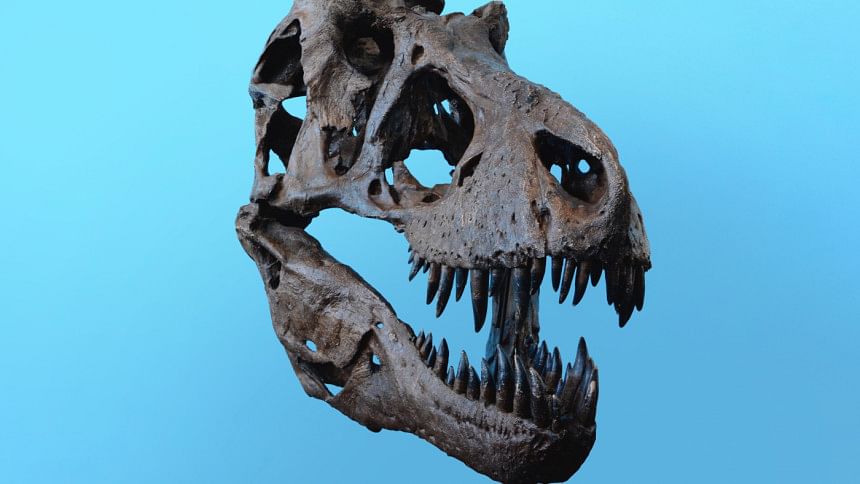Climate change devastated dinosaurs not once, but twice

Most people know that land-dwelling dinosaurs were wiped out some 66 million years ago when an asteroid roughly twice the diameter of Paris crashed into Earth. If the explosive fireball didn't get them, the plunge in global temperature on a planet with little or no ice -- caused by a blanket of heat-shielding debris in the atmosphere -- did.
What most people don't know is that more than 100 million years earlier, another climate change cataclysm devastated a different set of dinosaur species, with many going extinct. Except for this time, it was global warming rather than global cooling that did them in, with the planet heating up more quickly than the dinos' capacity to adapt.
Scientists have found evidence of this traumatic event some 179 million years ago in plant fossils in Argentine Patagonia. They also discovered a previously unknown dinosaur. The species, called Bagualia alba, is in the family of massive, long-necked sauropods, the largest animals to walk the Earth. Before the global warming event, sauropods were only one branch of the Sauropodomorpha lineage.
Other dinosaurs in the same group were smaller and lightly built, with some no bigger than a goat, according to a study published Wednesday in the Royal Society. But a series of volcanic eruptions over several million years released huge amounts of CO2 and methane in the atmosphere, warming the planet and transforming the vegetation dinosaurs fed on. The climate went from a temperate, warm and humid with diverse lush vegetation to a strongly seasonal, hot-and-dry regime.
Smaller Sauropodomorpha dinosaurs were unable to cope with the change, but larger sauropods -- like the Bagualia alba -- thrived. "Sauropods are massive, four-legged animals with long necks," which meant they could reach the tops of trees, palaeontologist and lead author Diego Pol told AFP. "Their very robust mandibles and spoon-shaped teeth were adapted to feed on all kinds of plants such as conifer trees. "Conifers in the early Jurassic had tough and leathery leaves that would be a challenge for any herbivore. But that gave B. alba an advantage over other Sauropodomorpha dinosaurs, said Pol, head of the science department at the Egidio Feruglio palaeontology museum in Patagonia.
Sauropods' new diet saw them expanded in size from 10 metres to 40 metres in length, as large digestion chambers were needed to cope. They became the dominant group of herbivores and eventually the largest animals to ever walk the Earth.

 For all latest news, follow The Daily Star's Google News channel.
For all latest news, follow The Daily Star's Google News channel. 



Comments